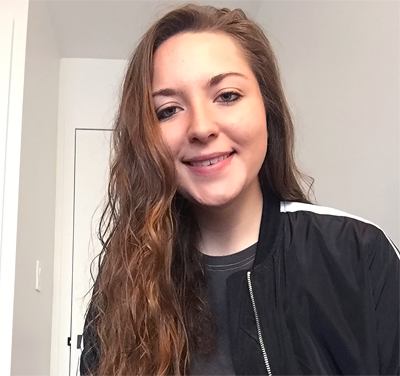Previously, we introduced you to podcast demo reels and explained why it's probably a good idea to have one if you consider yourself a podcaster (or a person who appears on podcasts often). If you're considering making a demo reel of your podcasting work, you're probably wondering how to do so, and if there are any factors you need to keep in mind in order to make your reel as effective as possible.
Today, we're going to give you the full rundown of things to decide before making your reel, rules to keep in mind when crafting it, and how to actually create the reel yourself. Let's get to it!
Things to Decide
Before you start working on your reel, there are a few decisions you need to make about its format. There are so many specific kinds of audio reels out there. It's best to narrow down the kinds of things you'd like to have in your reel so that the act of crafting your own isn't a jumbled, confusing experience.
First, you should decide whether your reel is going to be in a video or audio format. Both are suitable for a podcasting reel, but there are different benefits to both. With a video reel, you're able to include visuals as well as audio. This is especially helpful if you have a podcast that uploads video episodes as well as just audio episodes to streaming platforms. Just remember that if you do go the video reel route, it might be a good idea to label each clip included on your reel. You'll also need to include pictures if you only have audio for certain clips. With a reel in an audio format, you won't have to do this since the clips are supposed to flow without interruption from one to the next.
Second, you'll have to decide whether you want to include audio from one show or several on the reel. It depends upon your situation. Only been in one podcast (possibly your own) or you just want to show off highlights from one specific show? No need to include any clips from other podcasts, then. On the other hand, if you have podcasting clips from more than one show and are trying to display your versatility as a podcasting personality, best to include multiple clips from different shows.
Finally, you need to decide whether your reel should be niche or varied. In other words: do you want your reel to show off one particular aspect of your podcasting career, or do you want to display several skills you have as a podcaster? For example, you may decide that your podcasting reel includes only comedic moments from your career (therefore, a niche reel). If you're looking to get into more comedy work, this would be helpful in proving to future employers that you have the ability to make audiences laugh. You can even label the reel as a "comedy reel."
However, if you want to show that you're funny as well as dramatic, informative, and have a special skill of being able to conduct games with guests on-air, you're going to need a varied reel that demonstrates all those things with multiple clips.
Demo Reel Rules
There are really no laws when it comes to creating a podcasting reel. It can show off whatever you want. However, in order to make your reel as impactful as possible, we recommend sticking to these three tried-and-true rules...
Rule 1: Keep Your Reel as Short as Possible
If someone wanted to listen to 15 minutes of you talking, they would just pull up one of your podcast episodes. Reels are meant to be short, so make them short! We recommend keeping your audio montage around two minutes or less.
Rule 2: The Goal is Short Clips, But Many of Them
This tip is especially helpful if you're making a varied reel. The fact of the matter is, people have short attention spans. Say your reel is 2 minutes long, but it's just two 1 minute clips...that may feel a little underwhelming for whoever's listening. Your audience also may be sitting, listening to one clip and excitedly waiting for whatever's next, only to realize this specific clip of you talking about your Aunt Mary's cooking recipes just keeps going and going.
Don't let things drag! The key to making a standout reel is to include several very short clips. We're talking thirty seconds at most for each clip. You should at least have 3-4 different audio clips before publishing your reel.
Rule 3: Use the Best Quality Clips You've Got
No one enjoys a reel with really bad audio quality. The better the quality is of an audio clip, the more reason it has to be included on your reel. Not to say that clips that are okay in quality can't be added to your demo reel, the better the quality of your clips, the more professional your audience will think you are. If you're stressed about quality, just remember: so long as your audience can hear what you are saying clearly, you're fine!
How to Actually Make the Reel
You could just hire someone to craft your podcasting demo reel for you. Yes, those kinds of people exist! But you're most likely going to have to pay them money to do so. And if you're already editing podcasts, what's the point in paying someone to do something you already know how to do yourself?
Making a simple yet exemplary audio reel is actually quite easy. Here are some steps on how to do it...
Step 1: Assemble Your Clips
Make sure you have saved all the specific little clips you would like to use for your reel. If you're making an audio-only podcasting reel, just make sure each of your clips are in a .wav or .mp3 format. If it's going to be a video reel, check to see if your clips are in compatible video files. We recommend .mp4, since it is considered both an audio and video type.
Step 2: Edit the Clips Together
All you have to do is put each clip right next to each other on your timeline. You don't need any fancy transitions throughout...maybe you can sprinkle in some crossfading or audio fading out and in, but that's about it. The less complicated, the better.
Video editing a podcasting reel is a different story. Since there are visuals involved, you want to make sure that if your clip contains both audio and video, it is synced up properly. It's wise to include titles for every clip that display the name of the show the clip is from. (That way, your audience can check out those shows later!) You may also want to add other titles, pictures, or transitions if you feel it's necessary.
Step 3: Render It
Pretty self-explanatory. Once you're done editing your reel on whatever software you use, render it to your desired file type. Again, .mp3 and .wav work well for audio, and .mp4 is best for video.
Step 4: Time to Upload!
Once you're done with your reel, upload it somewhere on the internet where people can find it! On your website, on social media, or even listed with the rest of your podcast episodes (wherever you upload them). We also recommend sites like SoundCloud for audio-only reels, and internet hubs like YouTube or Vimeo for reels with visuals.
And that's about it! Easy, right? We hope this little guide encourages you to make a podcasting reel sometime in the near future. You never know who might find it! Happy podcasting!
Interested in podcasting with Live365? Join our waitlist to be the first to be notified when podcasting is available on the Live365 platform.
Discover thousands of free stations from every genre of music and talk at Live365.com. Keep up with the latest news by following us on Facebook (Live365 (Official) and Live365 Broadcasting) and Twitter (@Live365 and @Broadcast365)!
Article Image: A microphone and pop shield. In the background, a desktop computer shows editing software. (oksixx via DepositPhotos.)

